» Welcome to Ho Chi Minh City (Otherwise Known as Saigon)
» Things to See in Ho Chi Minh City (A-Z): Cholon
» Things to Buy: Vietnamese Modern Art
» Things to Eat in Ho Chi Minh City: Restaurant Guide
» Places to Party in Ho Chi Minh City: Bars and Clubs
» Places to Stay in Ho Chi Minh City: Legend Hotel Saigon
»
Getting There: Ho Chi Minh City Airport
» Buying Real Estate in Vietnam?
» Learning Basic Travel Vietnamese
|
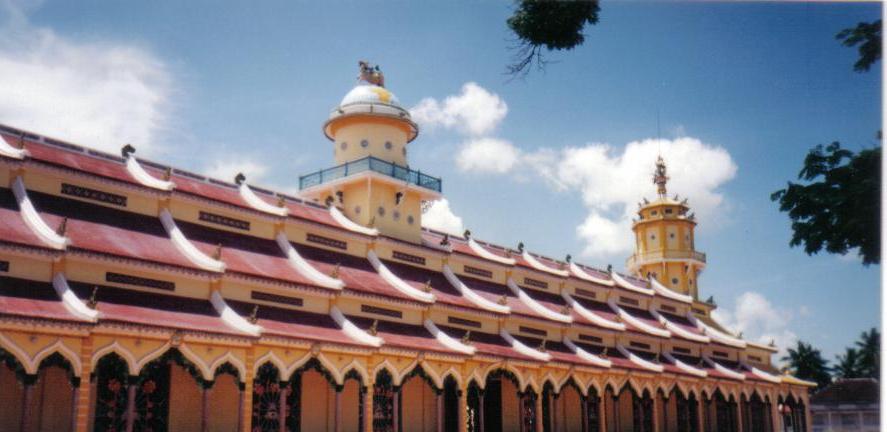 Airbnb: www.airbnb.com.
Airbnb: www.airbnb.com.
(Disclosure: this is an affiliate program link.)
Thanks to social networks and the Internet, visitors to Ho Chi Minh City have a lot more options these days than merely staying in a hotel. You could take part in a cultural exchange program, crash on somebody's couch, or share a room with a local. Couch Surfing is free; at Airbnb you have to pay. You will, however, end up with something a bit more substantial than a sofa. The service, which allows property owners to rent out their spare rooms, has plenty of beds available in Ho Chi Minh City at any time. For $US10 a night you could have your own room; for US$30 a night you could get your own fully furnished apartment (with wifi, cable TV, and 24 hours security). If you are lucky, you might find an entire villa for just US$12 a night.
Norfolk Hotel:
"Before I even passed through the gates of Tan Son Nhut, I found myself once again trying to figure out this puzzling city. A quarter-century ago we would spend hours drinking tea with the acolytes of Vietnamese generals hoping to detect subtle shifts in military strategy or cracks in the national will to fight. Now I was looking for some dramatic sign that Saigon had been transformed. I should have known better. Saigon has always resisted being parsed. The city and its people are laced with anomalies and paradox--which is precisely why those of us who lived there during the war found the place so fascinating. Ho Chi Minh City is still a challenge: nothing is quite what it seems.
"Take the building at 117 Le Thanh Ton, where I kept an apartment during my time in Saigon. In the evenings Nga and I would entertain friends and sources on the balcony, watching security flares hung from tiny parachutes float down lazily along the perimeter of the airport. We would look over at the Presidential Palace and wonder what the mercurial President Nguyen Van Thieu was plotting. A decade ago, our unexceptional, eight-story apartment building was transformed into the Norfolk Hotel--a splendid little establishment staffed by the sort of young, bright, helpful Vietnamese who now make Saigon a joy. 'The hotel is Australian-owned,' says my guidebook. Well, sort of. The general manager is Nguyen Thanh Hoang, a Viet kieu, or overseas Vietnamese, who lives in Australia and just happens to be married to the daughter of General Tran Van Tra, the commander who led the communist forces during their final assault on Saigon. The nexus seems familiar: Vietnamese generals and profitable real estate.
"In many respects the view from the balcony of 117 Le Thanh Ton hasn't changed much either. Thieu's old palace, now an exhibition hall, is hidden behind a screen of large tamarind trees. Only the red flag with the yellow star pokes theatrically through the green. The former Gia Long palace, a graceful French colonial structure, has been turned into a revolutionary museum where busloads of high-spirited students come to view the trophies of war. Beyond the old red-tiled roofs lie several modern, glass-fronted high-rises that testify to Saigon's on-again, off-again attempt to catch up with the rest of Asia.
"What's changed most is the sheer size and intensity of the city. No one would call the Saigon of the 1970s languid, but tight military security and midnight curfews did put a lid on things. A solemn wartime mood prevailed..."
Vietnam - An Emerging Hospitality Market in Transition
By Ruy Y. Moreno Ho Chi Minh City
Described by some observers as the next Asian Tiger, Vietnam has emerged from political isolation with a rush. Some USD 18.2 billion in capital has financed nearly 1,300 separate projects as of January, 1996 following economic reform that opened the country to foreign investment. Of those projects involving foreign investment, the service and tourism industries ranked second, accounting for USD $6.3 billion as of January, 1996. The Vietnam government has reported it expects foreign investment of some USD $40 billion between 1994 and the year 2000.
For international companies in the hospitality and tourism industries, this Southeast Asian nation represents both a highly promising and problematic market. Major hotel development underway in the country's two major cities Ho Chi Minh City and the capital city of Hanoi - may result in market saturation by 1998. It is to be noted that there are now 231 foreign joint ventures for tourism capitalized at nearly USD $5.0 billion, and a number of new hotels of international standards have been built in Hanoi, Ho Chi Minh City, Hai Phong and Danang. Development outside these cities has already become a focus of international groups and may ultimately be a source of considerable opportunity as crumbling infrastructure is rebuilt and the country takes its place in the global trade arena.
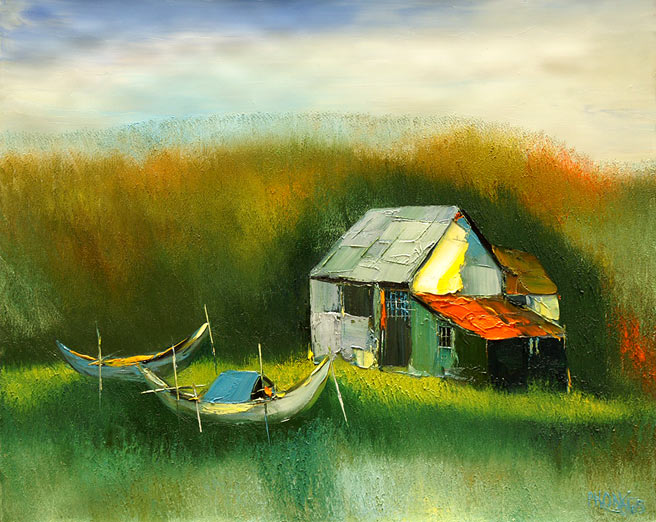   
v i e t n a m e s e + h o t e l s
STAYING ANYWHERE IN VIETNAM IS A BARGAIN -- AND HO CHI MINH CITY IS NO EXCEPTION. For rock-bottom everything, head for the famous Pham Ngu Lao area. This backpackers' district of hotels, guesthouses, cafes, restaurants, shops, and tour operators has become a bargain hunter's paradise and offers a wide enough range of options that you need not sacrifice comfort for a cheap place to lay your head. Pham Ngu Lao is in the heart of District 1 -- easily found and immediately exciting, something on the order of Khao Sarn Road in Bangkok; despite the ever-present touts from cyclo drivers, counterfeit book sellers, and Juicy Fruit-peddling street children, it has evolved into "backpackers central" with the best prices in town for accommodations and tours. It's mainly on De Tham Street, between Pham Ngu Lao and Bui Vien streets, and the cheap hotels are all along these three thoroughfares and in the small alleys that crisscross them. Rooms at budget-end hotels, about 80 percent of the 100 or so lodgings in the area, cost an average of $7-$15. Rooms in the $7-$8 range are with fan only, but $10-$15 will get you air conditioning. There is also a growing number of nicer, slightly upmarket hotels that charge $15-$40; these offer amenities such as air conditioning, bathtubs, and satellite TV.
Asian Hotel:
47R-146-150 Dong Khoi St., Dist. 1, Ho Chi Minh City, Vietnam.
Four star hotel in the heart of town. Wrote AandBN from Adelaide on TripAdvisor: "The Asian Hotel won't appeal to all travellers. It's probably a 3 star hotel at best, things are a bit frayed around the edges and at night you can hear a disco somewhere in the vicinity.
"But we liked it!
5 star hotels are the same all over the world - you could be anywhere. Staying at the Asian you know you're in Vietnam. The rooms are clean and have TV, fridge and en suite. The staff is very friendly and helpful. They serve an Asian/European buffet breakfast, and the restaurant meals are delicious. There is an internet booth in the foyer..."
Bich Duyen Hotel: 283/4 Pham Ngu Lao St., Dist .1, Ho Chi Minh City.
Rooms with fridge, shower, air-con and cable TV can be booked online for only 7 Euros.
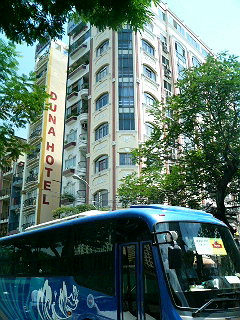 Duna Hotel: 167 Pham Ngu Lao St., Dist. 1, Ho Chi Minh City. Duna Hotel: 167 Pham Ngu Lao St., Dist. 1, Ho Chi Minh City.
Walking through Ho Chi Minh City on my last visit there, I happened on a new grand building called the Duna Hotel. According to its operators, the Duna Hotel is a "is a new modern building with beautiful architecture, situated conveniently in the heart of Saigon, you are just minutes away from City Centre and just minutes away about anywhere in the City." The hotel's 40 rooms each boast a bedroom and bathroom, individual air-conditioning, remote controlled colour TV with satellite hook-up, IDD phone and electronic safe. The rooms range in price from US$17 for a single standard to a low US$30 for the triple deluxe.
You'll want to consider the family-style Guesthouse 127 (127 Cong Quyen Street; tel. 8/836-8761, fax 8/836-0658), a slightly aging, 15-room hotel of the typical concrete variety, which makes up in character what it lacks in decor. For $7-$20 a night (depending on the room), lovable owner Madam Cuc will put you up and feed you home-cooked meals that -- amazingly -- are included in the price.
For luxuries like satellite TV and minibars, the shipshape Hanh Hoa Hotel (237 Pham Ngu Lao Street; tel. 8/836-0245; fax 8/836-1482) charges just $25 for deluxe rooms; and while the hotel is small (13 rooms), its units are large. Alternate choices nearby include the friendly Mini Hotel Cam (40/31 Bui Vien Street, tel. 8/836-7622), sitting dead center along a solid strip of about 20 tall and narrow concrete "mini-hotels." This 15-room, clean, quiet, five-story hotel costs $7/night with fan, or $10-$15 with air conditioning.
An upmarket choice is the plush Giant Dragon Hotel (173 Pham Ngu Lao Street; tel. 8/836-4759, fax 8/836-7279), a shiny, neon-lit place with 34 well-appointed rooms for $15-$25/night. All have air conditioning and satellite TV. Nearby are excellent restaurants such as Zen (175/6 Pham Ngu Lao Street), where for under $2 you can fill up on fresh vegetarian spring rolls and the best guacamole this side of Mexico. The oddest sight: the famed Cu Chi tunnels, a vast underground network of secret passageways utilized by the Vietcong against French and American forces.
Agencies like Kim Cafe or Sinh Cafe charge as little as $4 for a full-day excursion (add a $4 entry to the tunnels), including a stop at Tay Ninh for noontime mass at the striking Cao Dai Temple. The religion is a unique and colorful blend of Buddhism, Confucianism, Taoism, Christianity, and Islam.
Opened in October 2005, My My Arthouse is a modern, friendly, family-run guesthouse located in a quiet alley just 30 seconds walk from Pham Ngu Lao and De Tham streets right in the heart of the city.
We have a choice of rooms available to the budget traveller all with air conditioning and fans, double beds, cable TV and en suite bathrooms with hot water. Our 3 large rooms are bright and spacious with outdoor facing windows, while the 8 small rooms offer similar levels of comfort at a lower cost. We also have a twin private room with en suite (2 adjoining rooms - both with double beds) ideal for 2 friends travelling together.
All our rooms are cleaned and provided with fresh towels daily
Our room prices include a simple breakfast of fresh baked bread with butter and homemade jam with coffee, tea and orange juice.
We offer a full range of services for you such as fast internet access, laundry, money exchange, luggage storage and visa service. We are happy to offer honest advice on any local tours as well as onward travel and can book these for you if you wish.
Established in 1996 , Que Huong ?ELiberty 3 (2.5 Star Hotel) is situated in the part of town, catering for budget travellers on business or pleasure. The hotel has 60 rooms with views of the city.
Allezboo Bar is one of famous & pleasure palace!!
*** Services ***
- 24 Foreign Currency Exchange.
- Safe Deposit Boxes.
- Free newspaper
- Car rental, Tour desk, Air-ticket booking.
- Photocopying and mailing service.
- E-mail and Internet Access, Portage service.
- Bar & Restaurant
- Room Service, Coffee Shop, Florist Service.
- Same day Laundry and Dry cleaning.
- Meeting room accommodating 20 participants.
** Deluxe Room **
- Private Bathroom with Bathtub or Shower
- Air Conditioning with Individual Controls
- Minibar
- Satellite TV
- Separated Salon
- Writing Desk
- Cosmestic Mirror
- Room Safe
- IDD telephone, PC Line
- Wireless Internet Access
- Hair dryer
** Superior Room **
- Private Bathroom with Shower
- Air Conditioning with Individual Controls
- Minibar
- Satellite TV
- Separated Salon
- Writing Desk
- Cosmestic Mirror
- IDD telephone, PC Line
- Room safe
- Wireless Internet Access
- Hair dryer
** Standard Room **
- Private Bathroom With Shower
- Air Conditioning With Individual Controls
- Minibar
- Satellite TV
- Separated Salon
- Writing Desk
- Cosmestic Mirror
- IDD telephone, PC Line
- Room safe
- Wireless Internet Access
- Hair dryer
Liberty 3 (Que Huong) Hotel: 187 Pham Ngu Lao Street, District 1.
Established in 1996 , Que Huong – Liberty 3 is situated in the part of town, catered for the budget travellers on business or pleasure. The hotel has 60 rooms with views of the city.
Allez Boo Bar & Restaurant The Allez Boo Bar & Restaurant is known as an ideal spot for relaxation and for a chat with friends. Located on the ground floor of Que Huong · Liberty 3 Hotel, this 60-seats outlet enables you to enjoy cold drinks, fast food and popular Western dishes in a cozy atmosphere.
Liberty 4 Hotel:
71 Room(s), Price from 57 US$ (Approx 1850 Baht)
Liberty 4 Hotel is a popular hotel with both business and leisure visitors. There are 71 carpeted and air conditioned rooms of which include 22 deluxe rooms and 1 suite. All rooms are appointed come equipped with colour satellite TV, in-house movie channels, and IDD telephone. Liberty 4 Hotel is centrally located in the heart of Ho Chi Minh city and only 5 minutes walk from Ben Thanh market.
Vien Dong Hotel:
109 Room(s), Price from 45 US$ (Approx 1460 Baht).
Vien Dong Hotel is situated in the heart of Ho Chi Minh City, within seconds to downtown and the city's administrative areas. It comprises 109 rooms and suites all fully equipped with a wide range of amenities in accordance with the three-star hotel standards. The Vien Dong Hotel includes an Asian restaurant serving fine local Asian fare, as well as a popular terraced restaurant offering Asian and International cuisine.
   
r e g i o n a l + c o m p a r i s o n s
ONE OF THE AMAZING THINGS ABOUT VISITING HO CHI MINH CITY REGULARLY IS NOTICING JUST HOW FAST THE SKYLINE OF THIS CITY CHANGES. A similar effect can be observed watching the growth and explosion of Vietnamese art. This graph shows a comparison of sales of contemporary art from three south-east Asian nations compiled by the Thavibu Gallery, based on observation from 1998 to 2003.
Looking at the graphs, it is evident that the sale of Vietnamese works has declined while Burmese and Thai have increased slowly, but steadily. Many factors are involved, but the large numbers of copies and fakes in the Vietnamese market may a factor, as well as a certain lack of innovation. The Burmese works may have an immediate, "fresh" appeal coming from a country that has been isolated for a long time. Most Burmese works are literal and figurative with bright, attractive colours.
Vietnamese paintings have been among the most popular in Southeast Asia which may be due to several reasons, such as the French influence and the establishment of the Fine Art University, Ecole des Beaux Arts d?Indochine in Hanoi in the 1920s, active local collectors and connoisseurs, and a vibrant contemporary art scene. The demand is being reflected in the price level. Manpower, education, inspiration and economic success - for the few perhaps – are in place. The challenge is not to be complacent and rest on current successes, but to continuously strive for new areas of expression. It should be noted that there has not been much innovation lately, and some of the artists have a rather large production. A major concern is authenticity since copies and fakes have become prevalent in Vietnam, not only of old masters, but also of some of the best-selling modern artists. There are still good pieces to be found in Vietnam, but they have become harder to find, and it is ever more important to choose carefully the best quality works. A special mention should be made of lacquer paintings, such as by Trinh Tuan, Dinh Quan, and Cong Kim Hoa. They are uniquely Vietnamese and truly innovative. The synthesis of traditional lacquer techniques and modern paintings has been very successful, and the art of lacquer painting is surely an important contribution from Vietnam to the global contemporary art scene.
Burmese paintings are mostly traditional which can be expected from a country which is still rather isolated from the rest of the world. There is nothing wrong with traditional paintings as long as they are well executed, and Thavibu Gallery strives to show the best contemporary art coming out of Burma. Works by the top artists such as U Lun Gywe and Aung Kyaw Htet are still quite reasonable in price. Only 15 % of the population has more or less regular access to electricity, a much lesser percentage has access to TV and Internet. I cannot agree with those who say that Burma is now opening up, although there is more activity in the art scene than before. Due to censorship and isolation, the focus is still mostly on Buddhist subjects in this highly religious country. Canvas and paint are often in short supply.
Thailand has the most diverse art scene in terms of style, media and subject matter, and the interest in Thai art works is increasing. Neo-traditionalist art often featuring Buddhist subject matters still plays a prominent role on the domestic scene, though this style is probably not so interesting for the international audience, and Thavibu Gallery does not feature much of this style. There is a high degree of freedom of expression in Thailand, hence the censorship which plagues many other countries in the region does not limit what Thai artists can show. This often leads to expression of issues related to social awareness and social criticism, which is refreshing. The diversity of media and techniques can be exemplified by ?oil on aluminum sheets?Eby Therdkiat Wangwatcharakul, ?oil on carved plywood and vinyl tiles?Eby Kritsana Chaikitwattana and woodcuts by Jarrasri Roopkamdee. Another interesting area of contemporary Thai art can be found in three-dimensional works, such as installations. A book on Thai Contemporary Art is an excellent introduction to the art scene in Thailand.
There is a section on the Thavibu Gallery web site where visitors can vote for their favourite artist. The result of the voting is another indication of the popularity of the artists. However, the voting may be biased since Thailand has quite a large number of web surfers, Vietnam has fewer and Burma has almost none, and it may be a trend that visitors tend to vote for artists from their own country.
The Internet is clearly making the art scene more global. It does not matter much anymore where the artist is, where the art work is or where the viewer is. An indication of the increasing importance of the Internet is that Thavibu Gallery now sells more than half the art works through the Internet.
Quality - Authenticity - Service
Jørn Middelborg, Thavibu Gallery
Saigon Pearl: 92 Nguyen Huu Canh Street, Binh Thanh District. Phone: 848/821 9999. Web: www.saigonpearl.com.vn/home.htm.
According to the promotional material, Saigon Pearl, a high-rise apartment complex on Saigon River, represents "the largest, most elaborate development ever created in Vietnam." Due to come online from 2007 to 2009, Saigon Pearl incorporates eight 37-storey apartment buildings, a lavish clubhouse, two office towers and a large-scale shopping mall. Quoting from that promotional material again: "Picture living right beside the enchanting Saigon River, surrounded by a tropical paradise of natural and landscaped gardens. Watching clouds of mist swirl across the water as you prepare for the day ahead. Here, secluded from the rush and roar of daily life, the natural beauty of the scenery constantly seduces you..."
The following properties are available for sale: two-bedroom unit, three-bedroom unit, and penthouse. Visit the website listed above to find about pricing and other details.
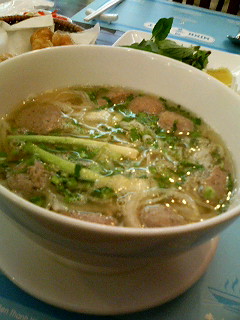   
c o m i n g + d e v e l o p m e n t s
THERE IS ALWAYS SOMETHING GOING ON IN HO CHI MINH CITY, SOME NEW DEVELOPMENT OR MAJOR PUBLIC WORKS PROJECT. Here are some of the latest developments and coming attractions:
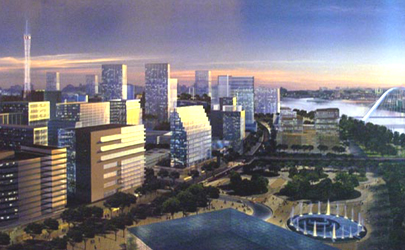 Thu Thiem Peninsula: Major development plan. Thu Thiem Peninsula: Major development plan.
Earlier this year (2006) the HCMC Government unveiled plans to turn the Thu Thiem Peninsula across the Saigon River into a new center. The Thu Thiem new urban area will be HCM City's center for finance, commerce and services, officials said at a press conference on the announcement of the detailed plans for Thu Thiem. "Thu Thiem will be a modern center, an extension of HCM City's existing downtown," said Vu Hung Viet, head of the Thu Thiem Investment and Construction Authority, or Thu Thiem ICA.
Thu Thiem will be divided into five zones: a central zone, a multi-functional zone along the East-West Highway, a northern residential zone, an eastern residential zone, and a swamp zone to the south.
The central zone, which will become a commercial and financial centre, will house multi-storey office buildings, a convention centre, and a central plaza and public park. This area is expected to be complete by 2010.
The central zone is expected to employ the largest number of people and house 40,000 residents.
The so-called swamp zone to the south will eventually house a botanical garden, an aquatic park, a sports centre, an arena and a resort hotel.
The existing mangrove swamps in the area will be preserved as part of the cultural heritage of Thu Thiem and Ho Chi Minh City.
Public transport will include a subway line and station in the central zone, and bus and waterbus services that would link the area with District 1.
Five bridges over the Saigon River will be built, including the Thu Thiem and Ton Duc Thang bridges, a bridge to link the peninsula with district 2, and another to connect the area with District 7.
A pedestrian bridge over the river will link Me Linh Square in District 1 with Thu Thiem.
The eastern residential zone and most of the central zone will be built during the first five-year phase.
The second phase, from 2010-2015, will develop 180ha of the central zone and the multi-function zone along the East-West Highway.
The third phase from 2015 to 2020 will develop 87ha, and the fourth phase from 2020 to 2025, 120ha.
   
c o n d o m i n i u m + j o i n t s
HERE IS AN EXCERPT I FOUND ON SkyScraper City, CONCERNING THE CONDO SCENE IN SAIGON AND VIETNAM IN GENERAL:
"Condominiums in Ho Chi Minh City have been in high demand for the last two months, despite the fact that prices have gone through the roof.
"Over the past two weeks, Ms. Kim Loan from the Central Highland province of Lam Dong has been trying to find a condo in the city for her daughter, who is to start university next year.
"A real estate agent showed her a 364-million VND condo at the An Loc Apartment Building in Go Vap District and another in Binh Thanh District at nearly 1 billion VND.
"'Possibly I will choose the one in Go Vap District, a 64-square-meter condo with a living room, a bedroom, and a bathroom,' she said.
"An Loc, a newly built 12-storey apartment building, is about to be put into service. Most of its condos are already sold, but some owners will transfer ownership for those willing to pay a few dozen to a hundred VND million higher, according to property companies.
"Following the increased demand many condominiums, particularly high-quality ones, have been constructed in the city. In mid-September, a nine-storey apartment building comprising 174 condominiums and covering an area of over 4,600 square meters in Thu Duc District was inaugurated. Up to now, 110 condos have been sold at 6.5 million VND per square meter.
"Meanwhile, construction of a high-quality 18-storey complex in Binh Thanh District just began recently. Each condo will be 80 to 93 square meters in size, with three bedrooms, two bathrooms, a kitchen and a living-room, with a price tag of 780 to 945 million VND.
"However, these prices are far less than those in the city center. A My Vinh condo in District Three is selling for US$137,000. Forty-four of its 62 units have already been sold although construction of the building itself will not be completed until next year, reported its investor Thao Loan Co., Ltd.
"Thao Loan Co., Ltd. is also building another first-rate 12-storey complex in District Three. The price of each unit will range from $US 150,000 to 170,000.
"The demand for condos is on a sharp increase, commented Le Quang Hang, Deputy Chief Executive of the Hoang Quan Real Estate Co., Ltd. Therefore, the firm is planning to build more condos in the near future. The Hoang Quan Company targets young customers who are interested in condos because they are affordable, Mr. Hang said.
"High-quality condos have sufficient family conveniences, a nice environment and good security conditions, explained Deputy Director of the Asia Commercial Joint Stock Bank Real Estate Supermarket Vo Dinh Quoc. Also, most of these properties are located in the city center, he added.
"But in fact, the Vietnamese do not really like living in condos, Mr. Quoc noted. They consider it as a temporary place before moving to a private house, he said.
   
s e r v i c e d + a p a r t m e n t s
HERE IS A SELECTION OF SOME OF THE HOTTEST SERVICED APARTMENTS ON OFFER IN THE CITY OF SAIGON, OTHERWISE KNOWN AS HO CHI MINH CITY:
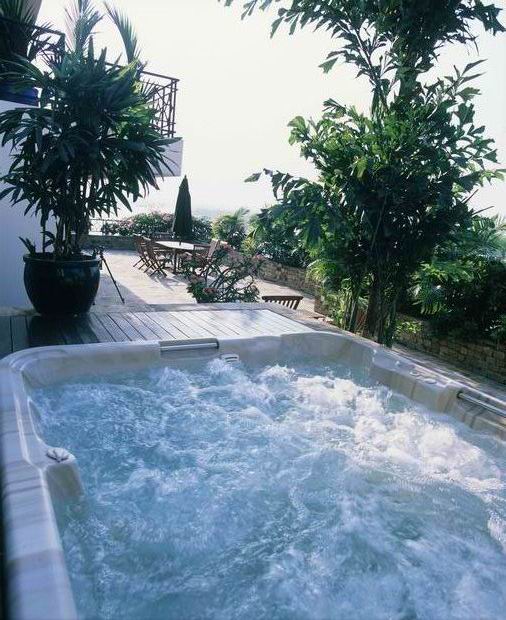 Saigon Domaine Serviced Apartments: Binh Thanh District. Saigon Domaine Serviced Apartments: Binh Thanh District.
Saigon Domaine is just 10 minutes by speedboat (15-20 minutes by car) from the city center, and affords a beautiful riverine position. This development comprises 45 units ranging from a 72 square metre one-bedroom apartment to a huge 377 square metre, four-bedroom pad. Units come in a variety of layouts, but all of them are gifted with large sliding windows that open onto spacious terraces or loggias with breathtaking view over Saigon River and the south Vietnamese countryside.
Some of the facilities at Saigon Domaine include a fitness center and saunas, open air children's and adult's swimming pool (see the attached pic), children's playroom, Club Room for meetings and entertainment diversions, an inhouse catering service, attendant bars and a mini-shop, and a boat and bus service to the city center (the boat probably provides the more scenic view.) Car and boat rental (for folks who like nothing better than messing about in boats) and daily housekeeping services are also available.
Recreational possibilities for residents include water skiing and fishing, jogging and taekwondo, piano and dance classes, and aquatic gymnastics and aerobics and ping pong. It should be noted that Saigon Water Park is just minutes away!
Giac Duc: 492 Nguyen Dinh Chau, Dist. 3.
Chau from America says this place has the best vegetarian food in town.
|
UNCLONED WORLD
Contact us by email: bunyarra@hotmail.com
phone: (090) 6039-9341 (JAPAN)
|
|
|


